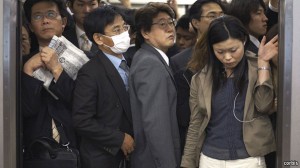Source: www.economist.com
THE world’s first underground train, on the world’s first metro system, travelled the three-and-a-half miles from Paddington to Farringdon on January 9th 1863. Then, as now, Londoners queued to get aboard the packed carriages. In October that year The Economist ran an editorial arguing that more such lines under the capital were needed to relieve its congested streets. It concluded that such a network, if well run, would surely be profitable.
 We were right on the first point: London would have ground to a halt long ago without its “Tube”. But we were too optimistic on the second. Although fares on the Underground are now among the most expensive of any metro system worldwide—a one-stop ride costs up to £4.50, or $7.34—the system is no money-spinner. Last year, the £2 billion of fares revenue, added to the smaller amounts from selling advertising space and suchlike, only just covered running costs, at £2.2 billion.
We were right on the first point: London would have ground to a halt long ago without its “Tube”. But we were too optimistic on the second. Although fares on the Underground are now among the most expensive of any metro system worldwide—a one-stop ride costs up to £4.50, or $7.34—the system is no money-spinner. Last year, the £2 billion of fares revenue, added to the smaller amounts from selling advertising space and suchlike, only just covered running costs, at £2.2 billion.
Another 29 years passed before Chicago became the second city to boast a metro (its first line ran on stilts rather than underground—any high-frequency, high-capacity urban system separated from other traffic counts as a metro). But metro-building accelerated from the 1960s, in reaction to the growth of sprawling mega-metropolises around the world. Now almost 190 cities have metros, with more to come amid a fresh spurt of construction in developing countries. In 2012 the Chinese cities of Suzhou, Kunming and Hangzhou opened theirs, as did Lima in Peru. Among the proud new owners of a metro in 2011 was Algiers, only the second African capital (Cairo is the other) to gain one.
Existing metro systems are also being expanded at a rapid pace. On December 30th Beijing opened 70km of new lines, bringing the total to 442km and making the Chinese capital’s system the world’s longest, overtaking Shanghai’s (see table). London would still be champion if its Overground (a revamped network of surface-rail lines, completed in December), Docklands Light Railway and tramways were included in the total. But Beijing will not be outdone: it plans to expand its network to 1,000km by 2020.
China’s investment in high-speed intercity railways is tailing off but it is still pumping money into subways. So is India: Bangalore’s metro opened two years ago and Mumbai’s should open soon, following the customary delays and squabbles between the government and contractors. Smaller cities, such as Bhopal and Jaipur, have plans on the drawing-board. Brazil is expanding the inadequate metro systems in its two main cities, Rio de Janeiro and São Paulo, while building new ones in smaller ones such as Salvador and Cuiabá.
Metros are being built in all sorts of unlikely places, such as the Gulf: Dubai’s system opened in 2009 and Mecca’s a year later. Now Abu Dhabi, Doha, Bahrain, Riyadh and Kuwait City have plans in progress; that they have plenty of oil to fuel their cars is not stopping them from trying to become greener. Future candidates for “city you would least expect to have a metro system” include sleepy Asunción in Paraguay and Kathmandu in Nepal. More info


















